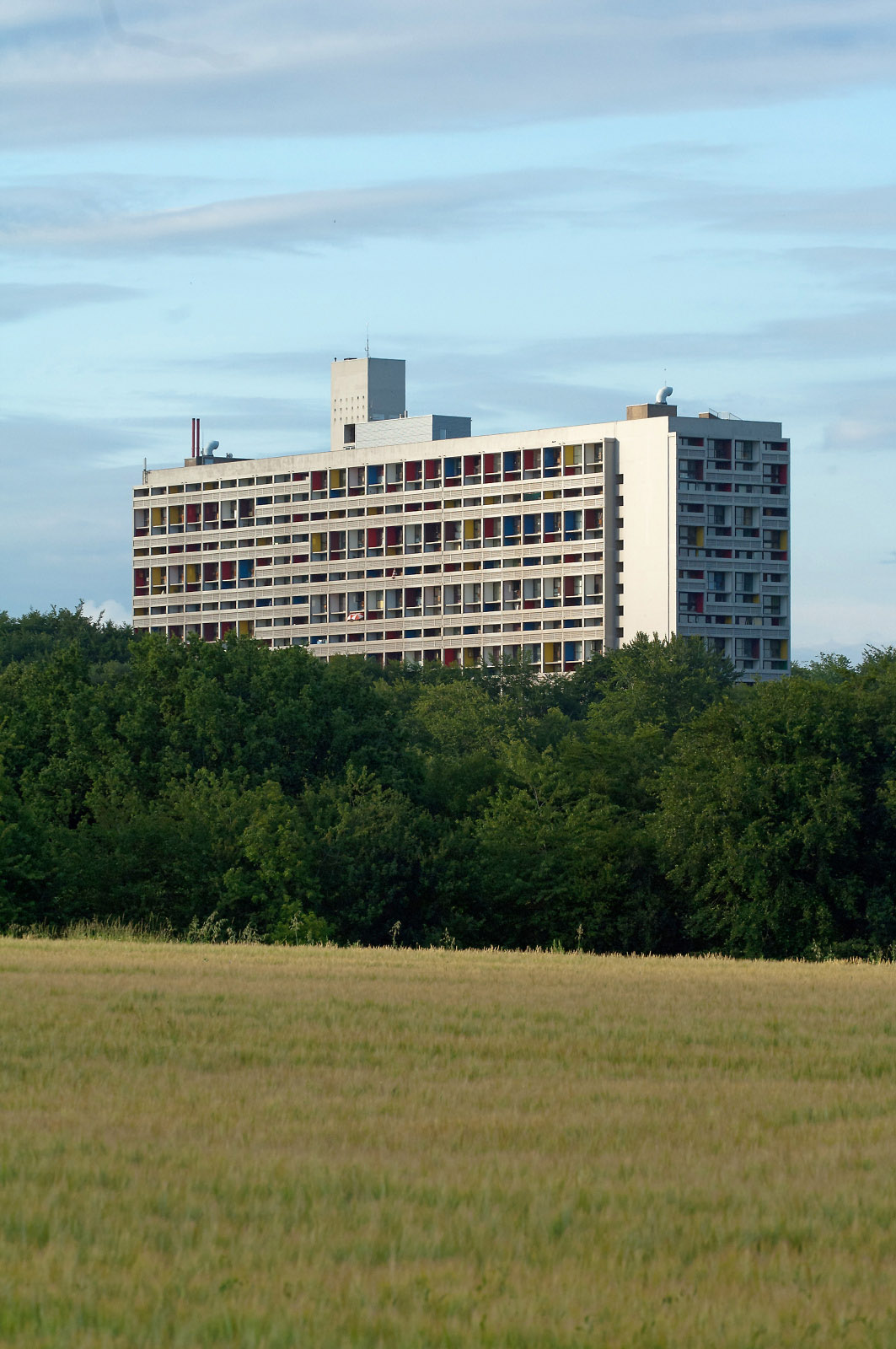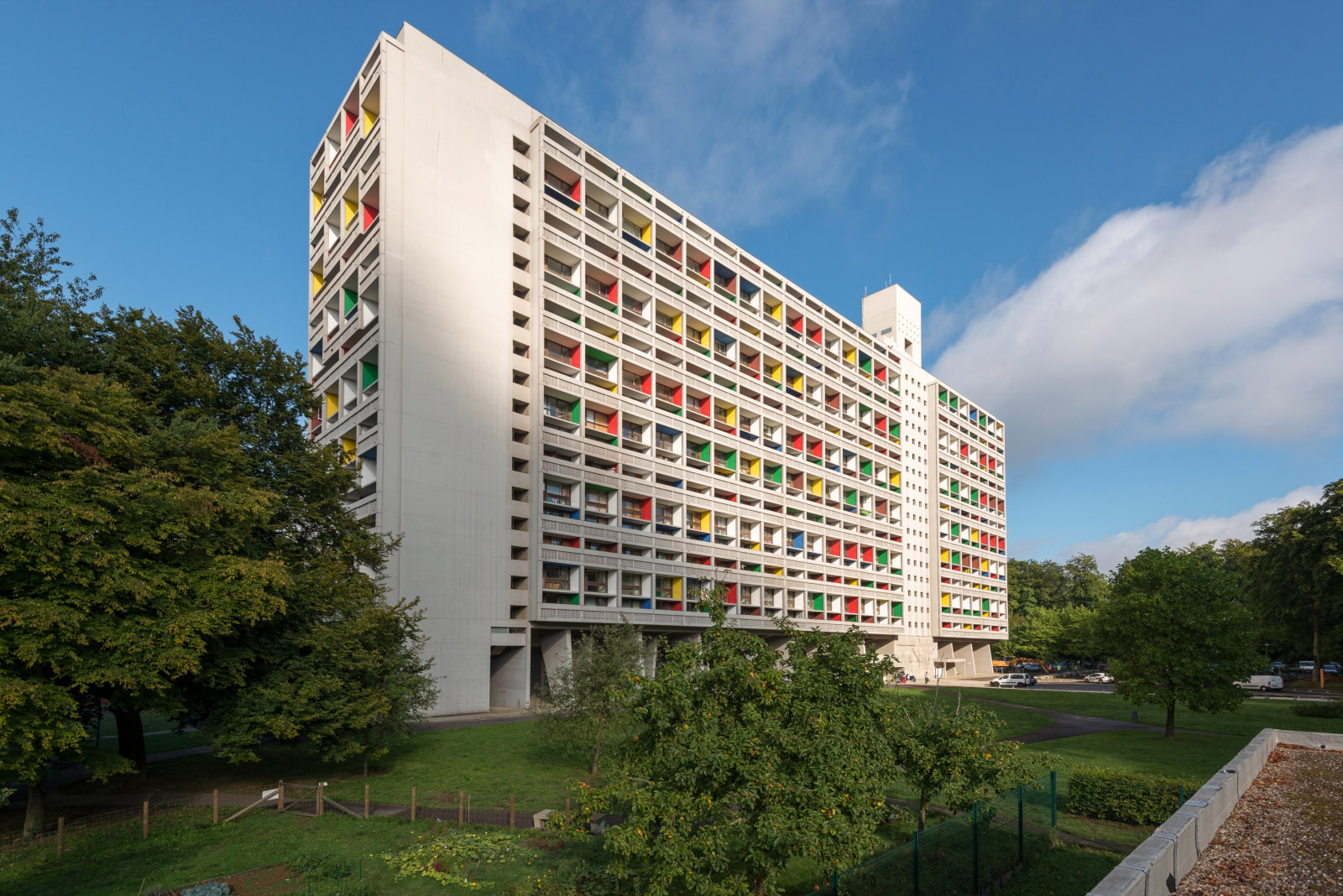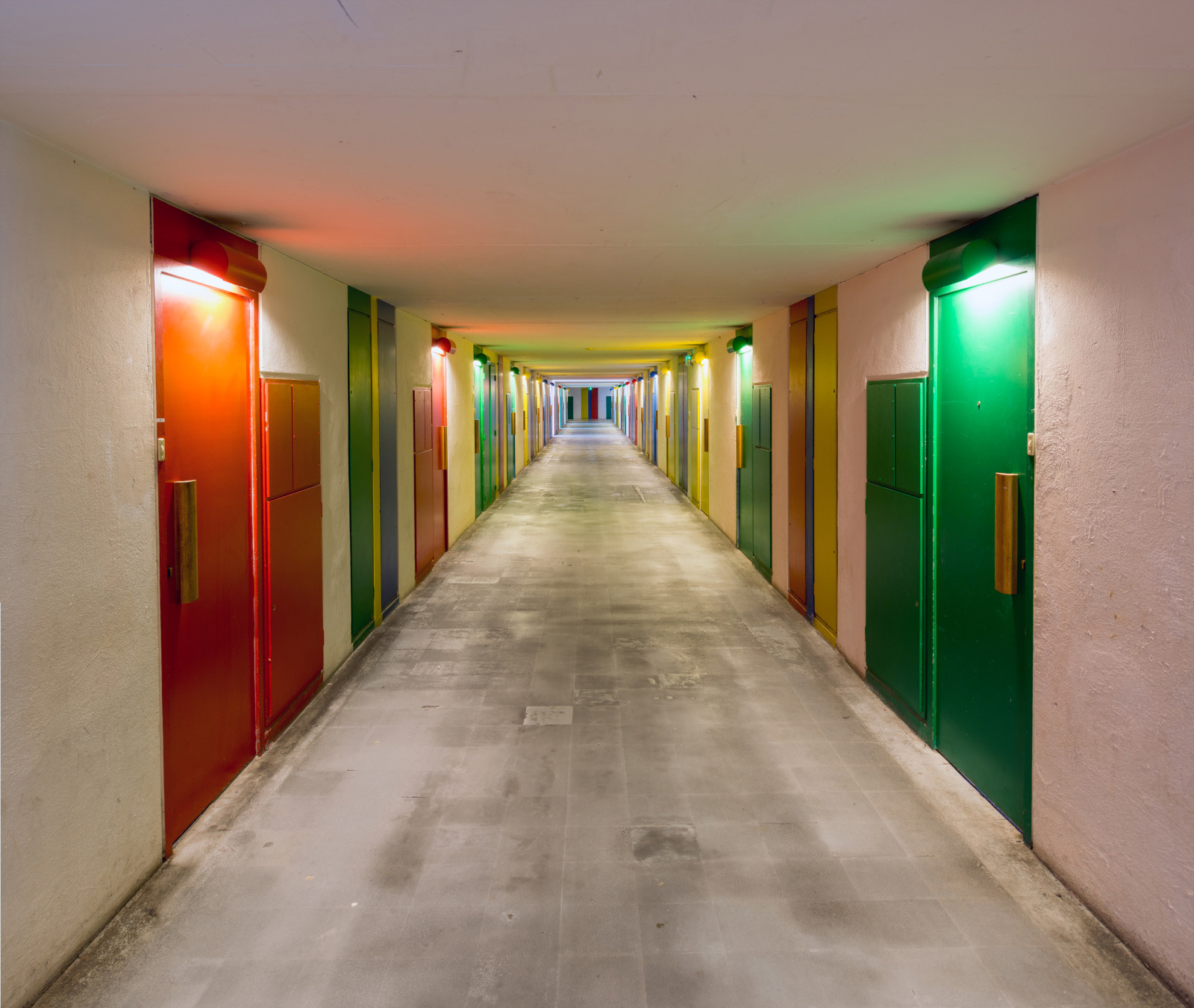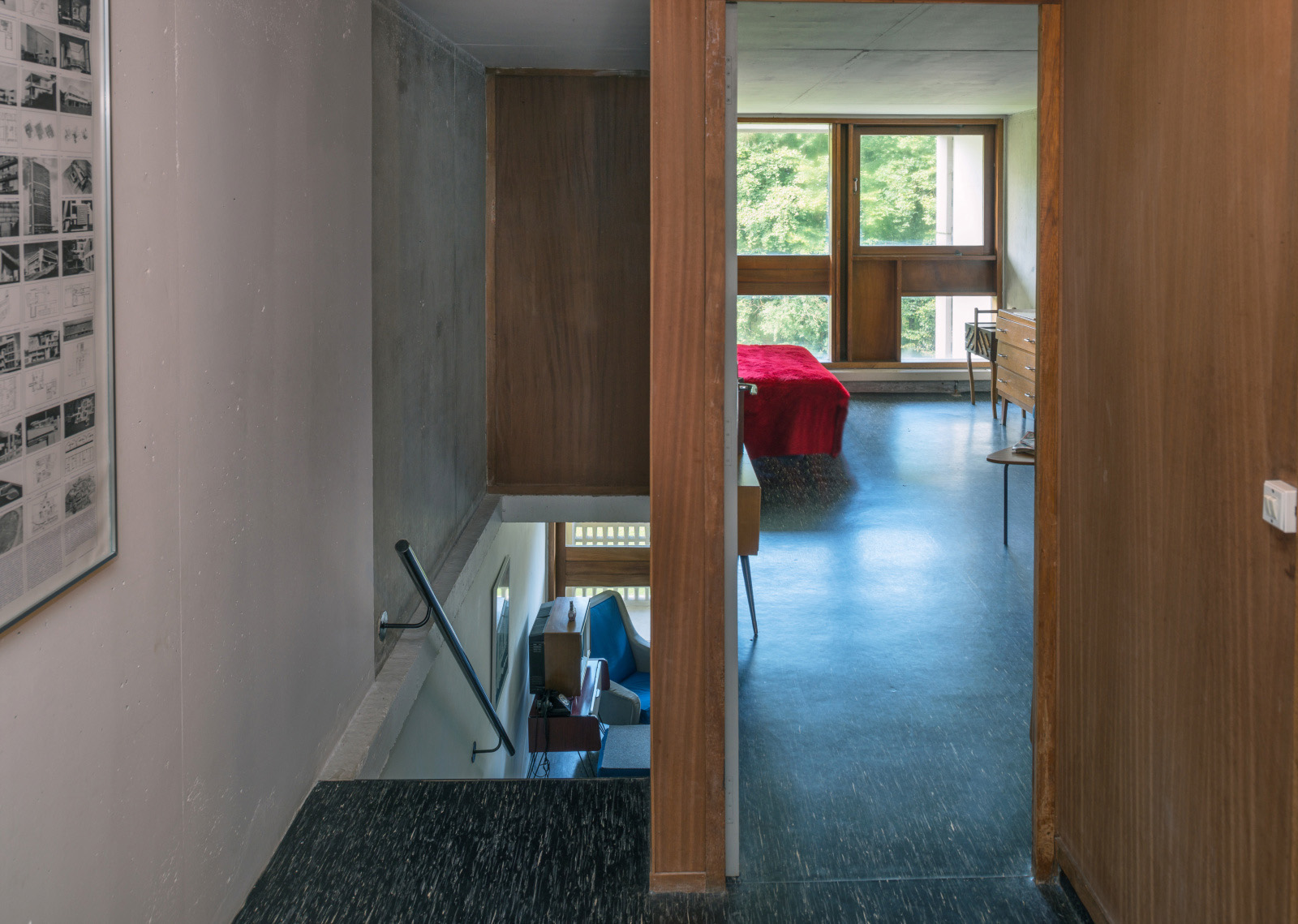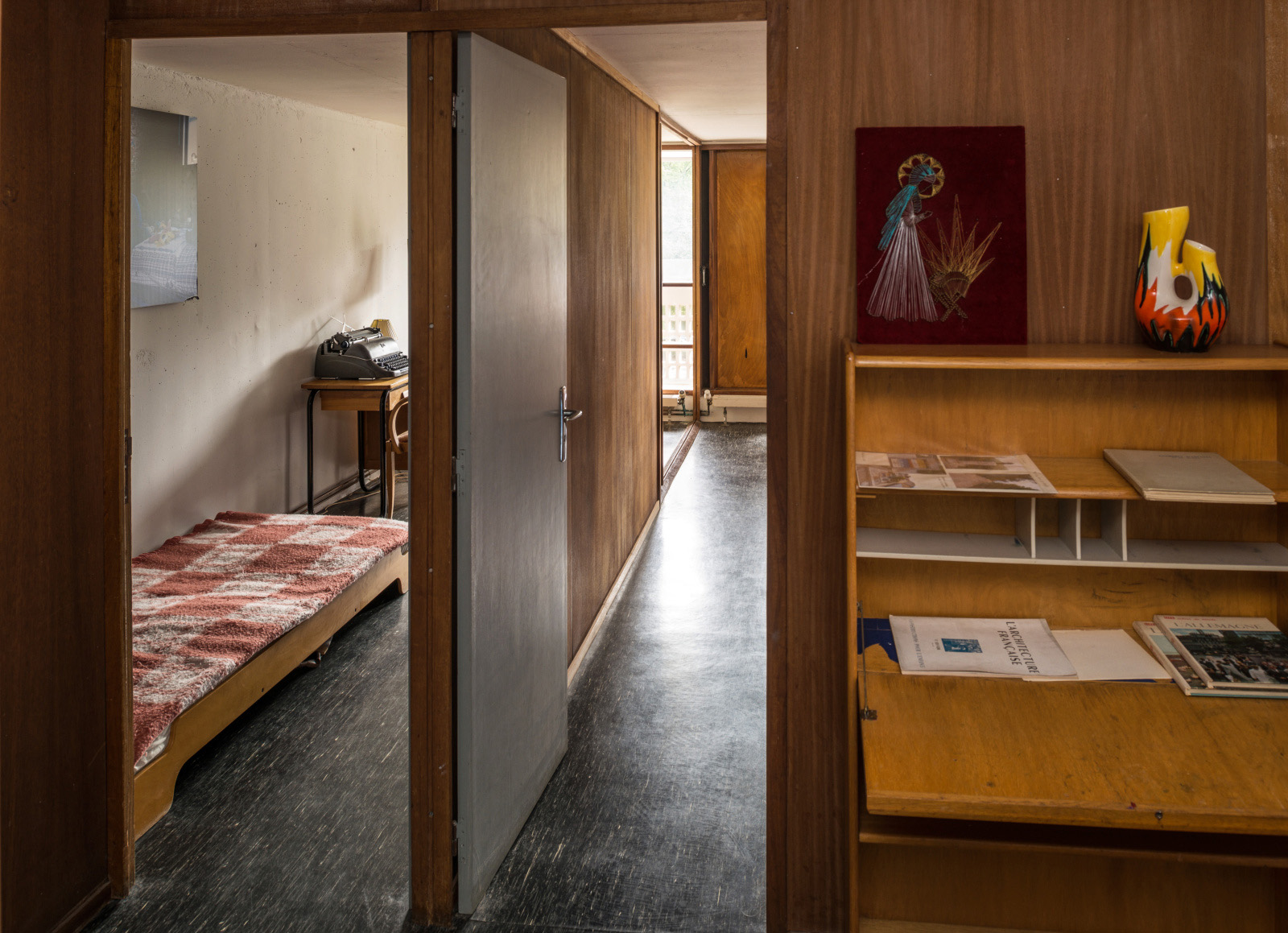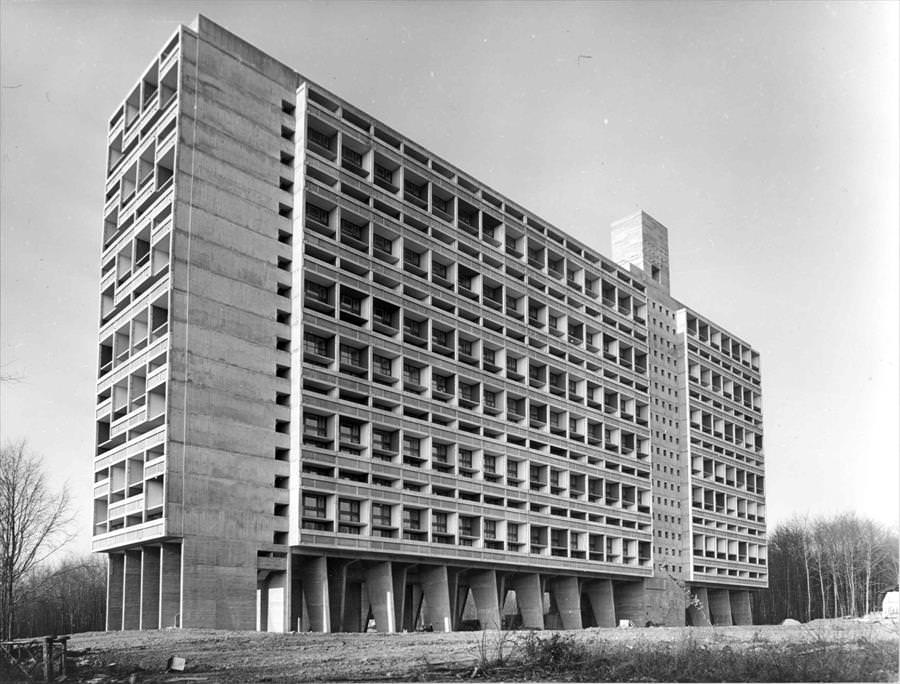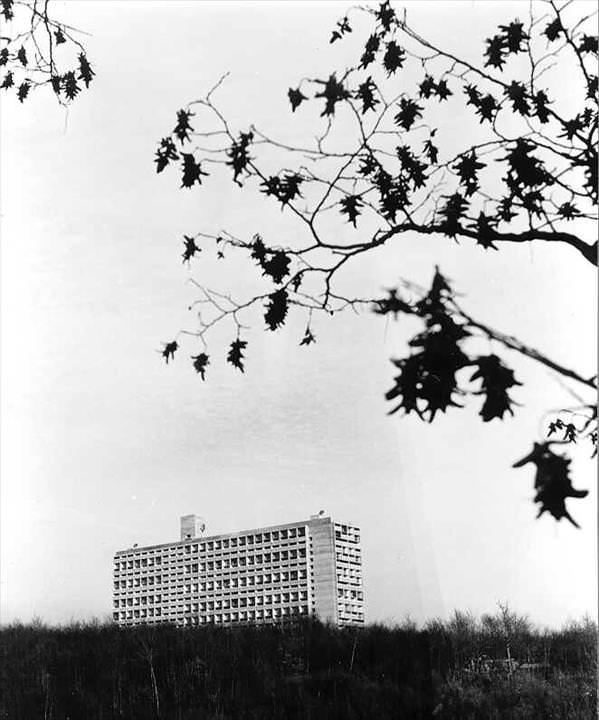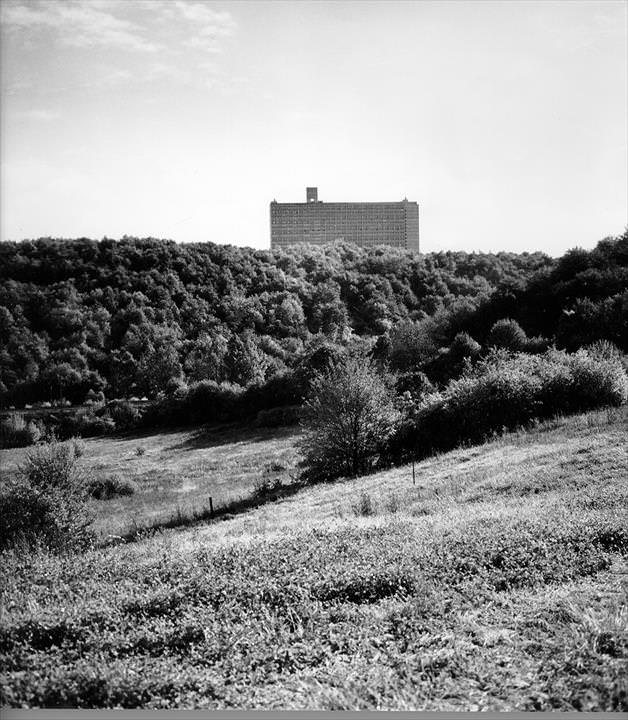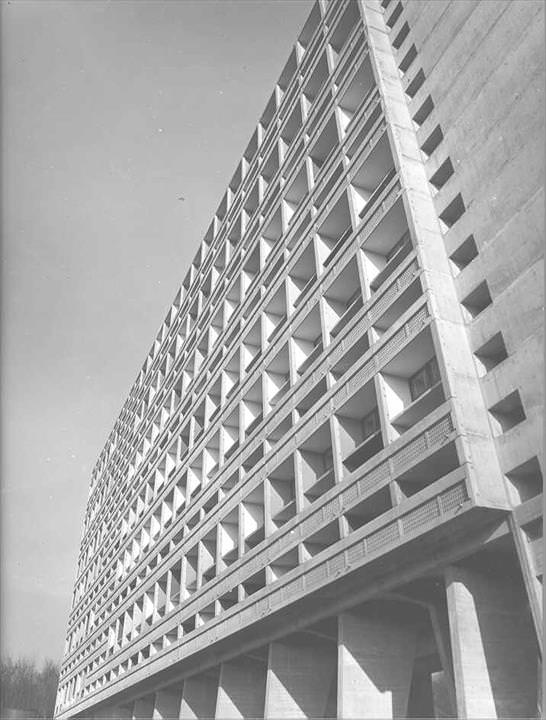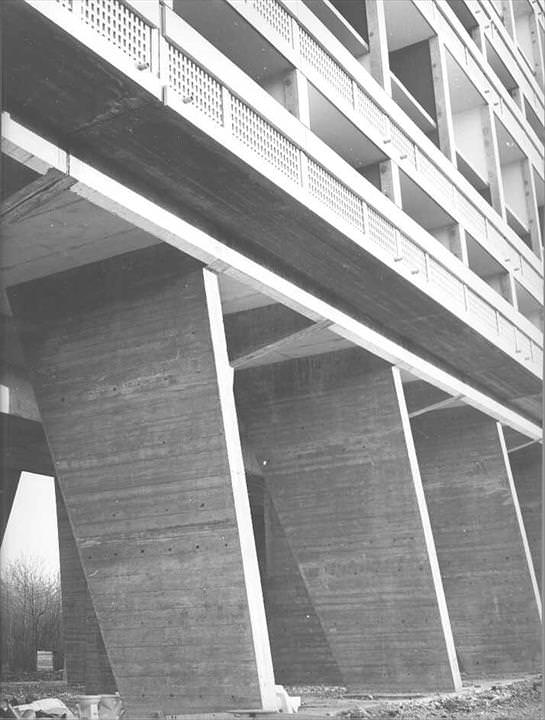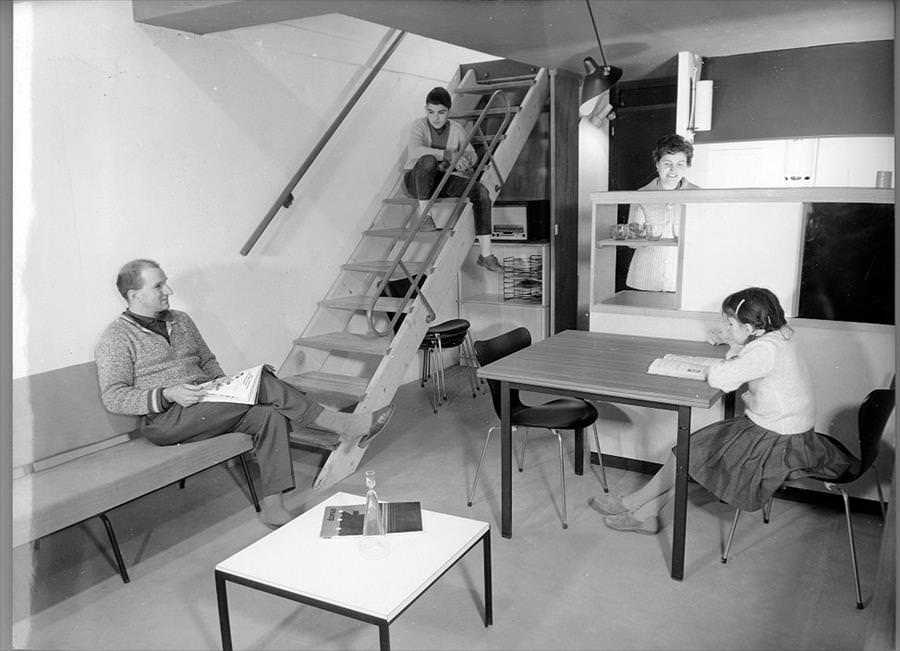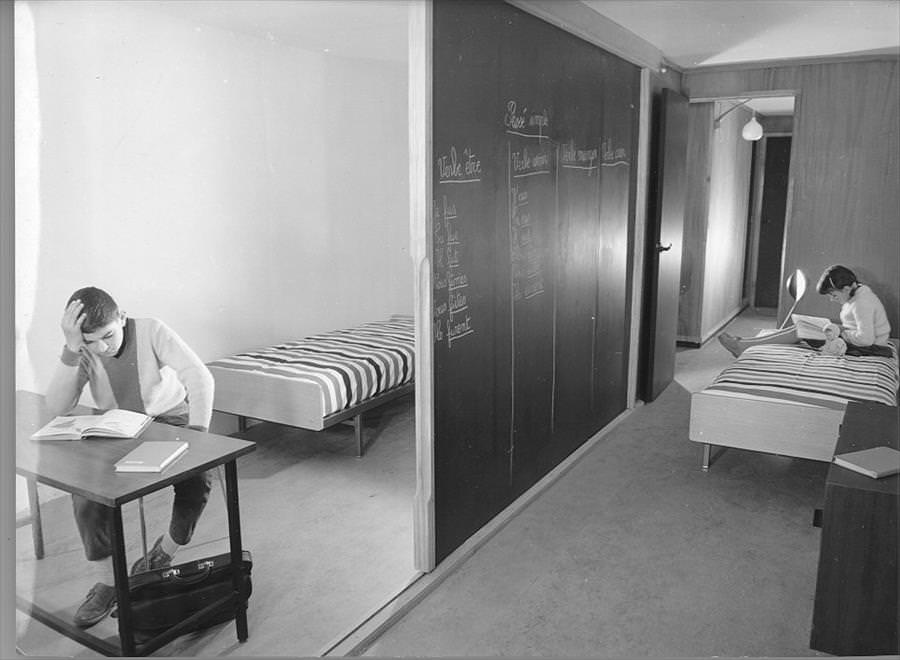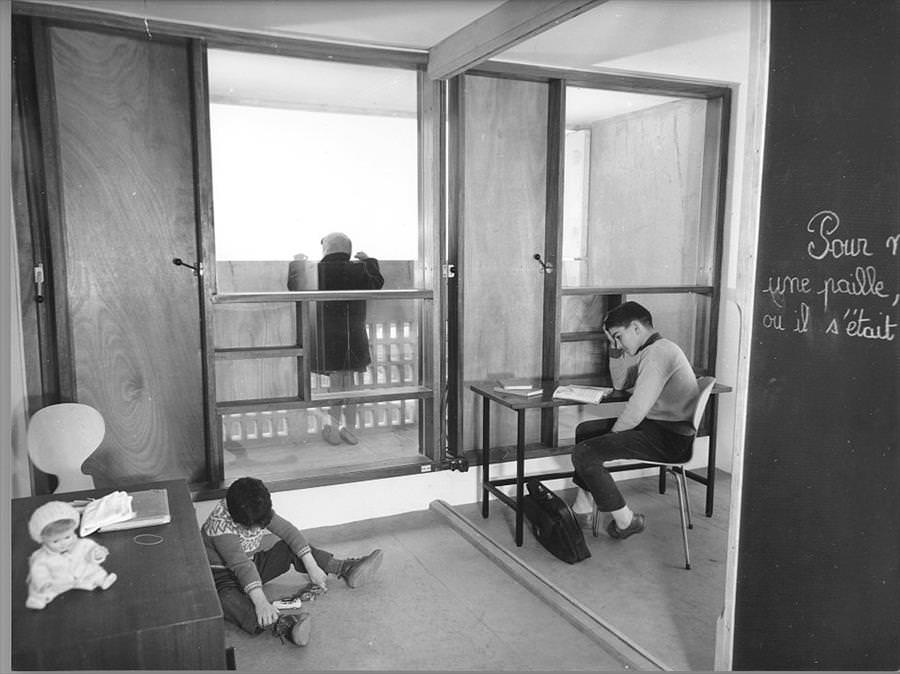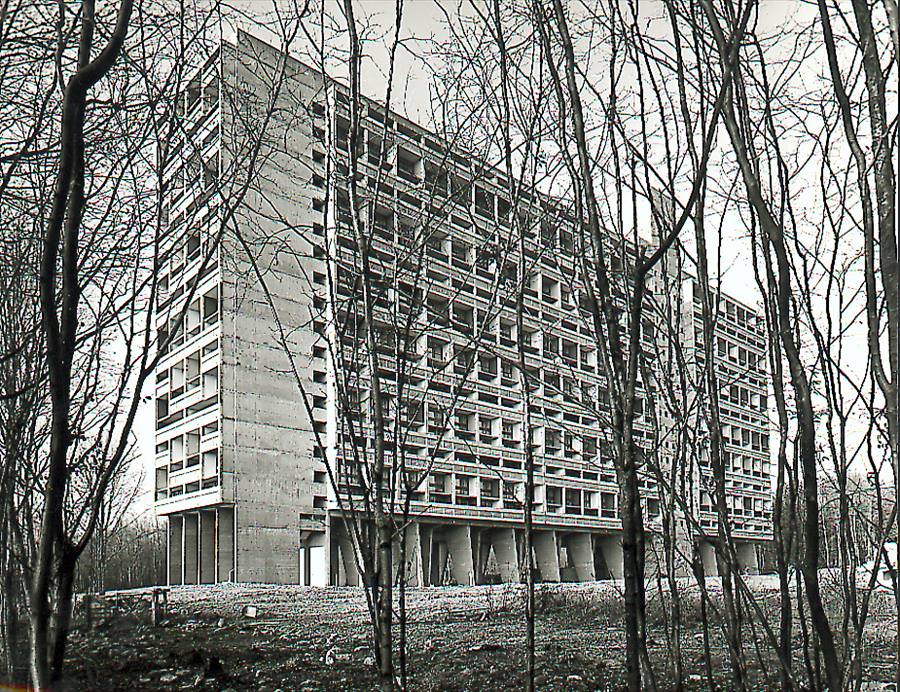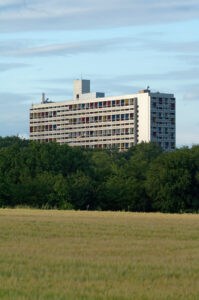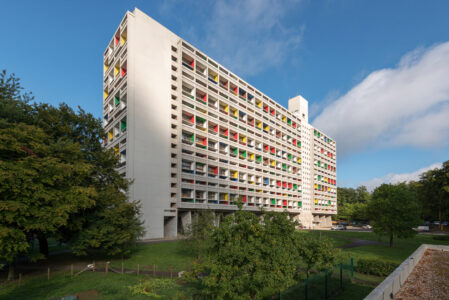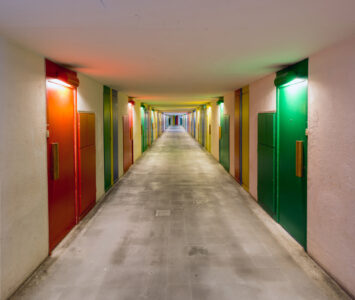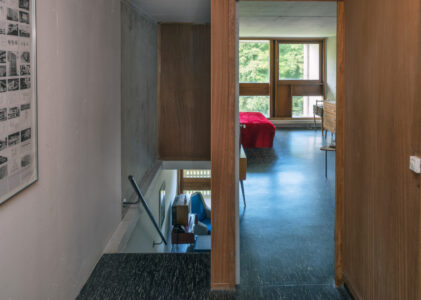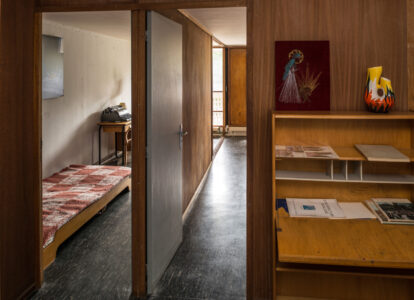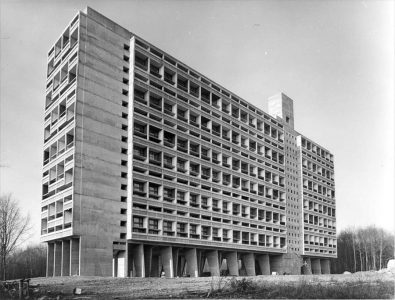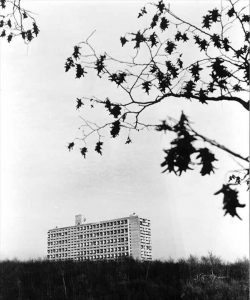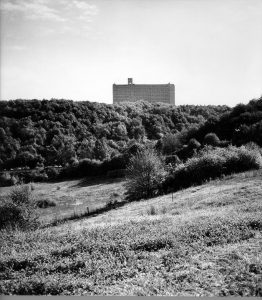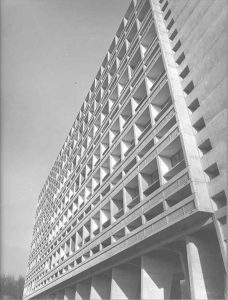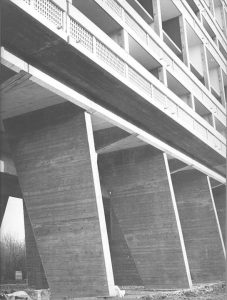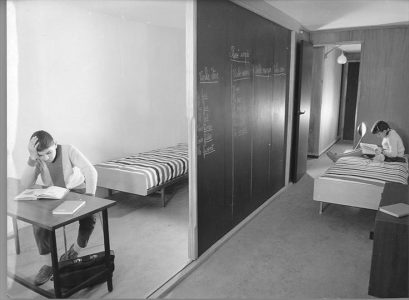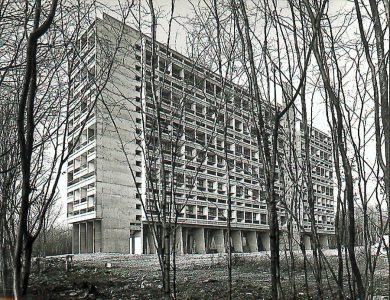Unité d'Habitation
Briey-en-Forêt, France, 1956
Commission
After an extensive increase in population at the beginning of the 1950s due to the development of the mining industry, the Briey-le-Vieux region was obliged to respond to an urgent need for new housing. In 1953, the architect Georges-Henri Pingusson established a programme providing for the construction of a new town: Briey-en-Forêt. With the support of his friend and former member of parliament Philippe Serre, Le Corbusier obtained the commission for a housing unit of “standard dimensions” like those already developed in Marseilles or Rezé.
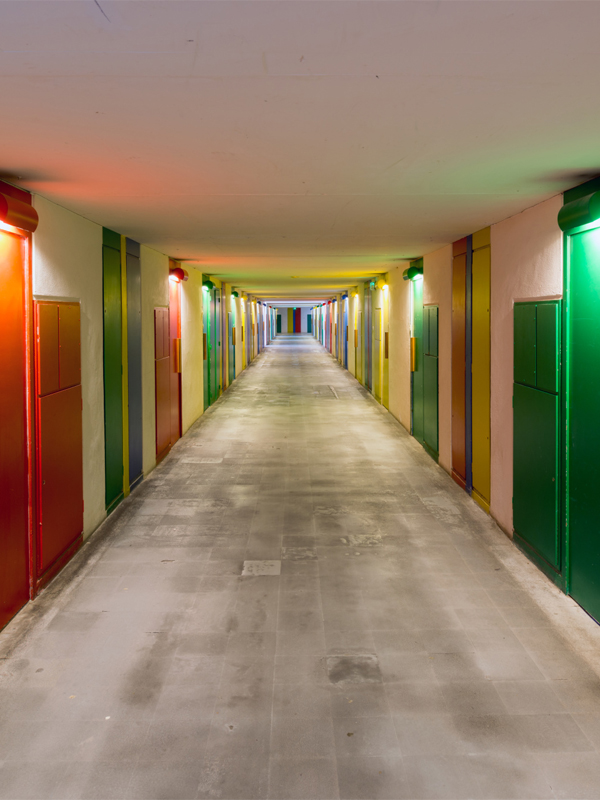
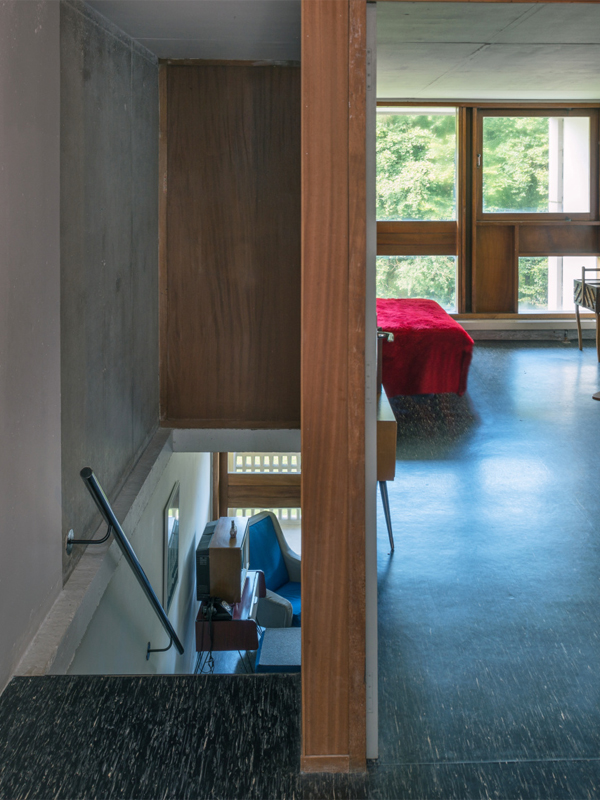
Project
In Briey, Le Corbusier chose to adapt the plans of the Rezé Housing Unit: the dimensions of the new unit are almost the same (Briey has an additional bay, increasing its length). The materials used, such as reinforced concrete, are the same. Le Corbusier originally planned to use a metal frame, but had to abandon this for economic reasons. Each flat was provided with a loggia protected by concrete brise-soleils. As in Marseilles and Rezé, the apartments are accessible via an ‘interior street’.
The Briey Housing Unit differed, however, in its internal organization. The number of apartments (339) was greater and, the building being at some distance from the city centre, a shopping centre was installed on the ground floor. The nursery school intended for the roof terrace was finally not built. There were more small apartments than in Rezé and Marseille, a feature which altered the relationship between the residents and the building. These small flats have only one room and lack the dual aspect that Le Corbusier had planned. Again for reasons of economy, the apartments are less well sound-proofed than in Marseilles.
Le Corbusier appointed André Wogenscky as operational architect. Preconstruction studies were carried out by the Séchaud et Metz design office, which had already worked in Rezé. Reinforced concrete was poured on site by CEEMPT, but otherwise most of the companies involved in the construction of the Briey Unit were the same as for Marseille and Rezé. The joinery was entrusted to Barberis, glazing to Alazard and heating to Missenard-Quint. The construction of the Briey Housing Unit lasted 23 months.
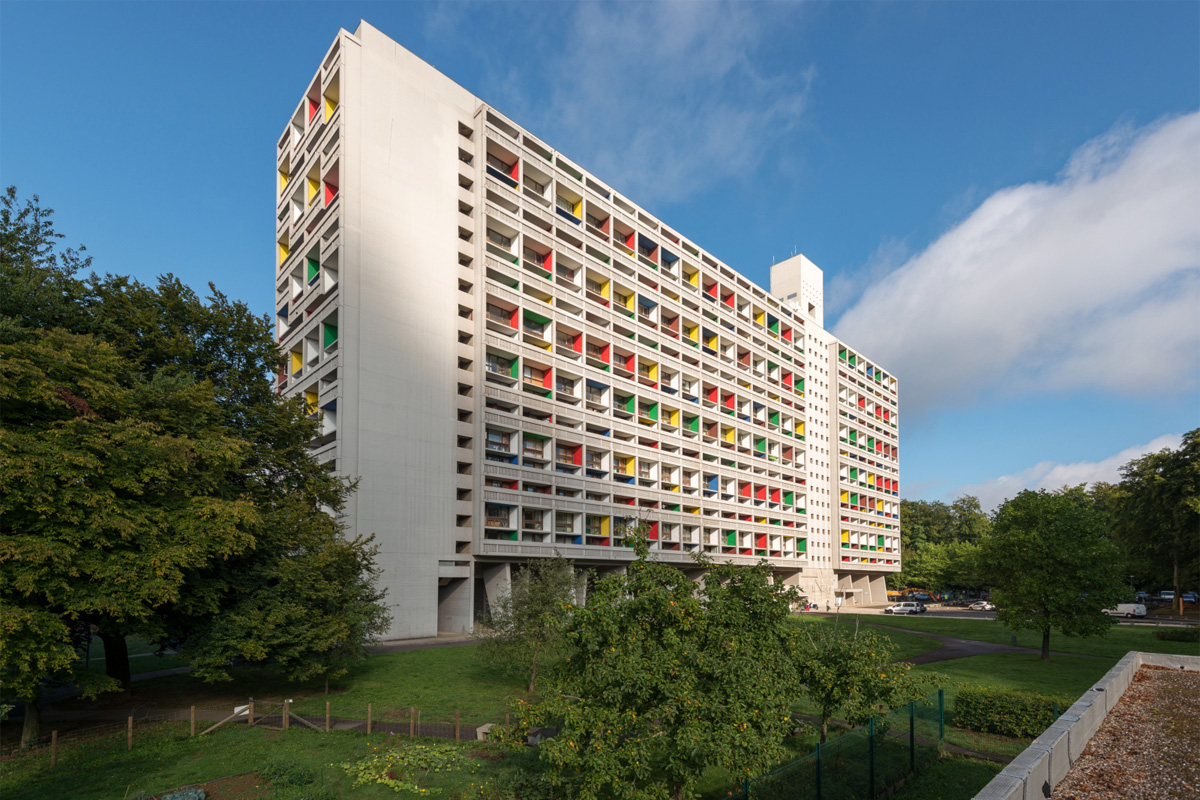
Subsequent history
The Briey Unit was fully occupied by 1961, but only for a short period. The local steel industry was declining sharply. On being made redundant, the workers – a large proportion of the residents – gradually left the Housing Unit. The building suffered from poor management by the social housing office. Living conditions deteriorated and, as it gradually lost its occupants, the Unit became poorly maintained and subject to vandalism.
The Meurthe-et-Moselle social housing authorities decided to withdraw in 1981. Having lost its last occupant in July 1984, the Unit was quickly walled up and its demolition envisaged.
Saved from destruction by the action of the town council, together with the support of those close to Le Corbusier, it then became a co-ownership. Part of the building was renovated between 1987 and 1988 and a nursing school was then set up. Since then, with the renovation of the remainder of the building between 1990 and 1991, La Première Rue, an association set up in 1989, has been helping to restore its image.
From the beginning of the 2000s, major restoration work was undertaken on the walls and roofing. After restoration, grey paint, designed to protect the surfaces and to mask the raw concrete, was applied to the facades and walls of the interior common areas.
Work is at present under way to restore the wooden frames of the facades. A diagnostic study has been finalized and a test phase carried out.
